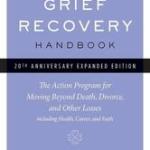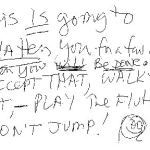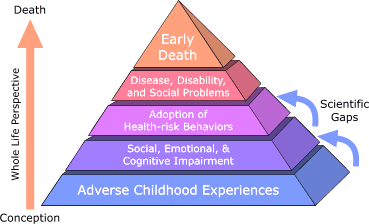 The “Grief Recovery Handbook” by John James and Russell Friedman is an invaluable tool for healing emotional pain and loss. It saved me after the death of my parents and my divorce, which all happened at once.
The “Grief Recovery Handbook” by John James and Russell Friedman is an invaluable tool for healing emotional pain and loss. It saved me after the death of my parents and my divorce, which all happened at once.
It shows us how to write “Grief Letters” to our “dearly beloved,” and read it to a listener. This simple eye contact with another human, who need only be silent and accept our grief, pain, and yes tears, creates astonishing healing. “This is why…God put tear ducts in our eyes,” says Dr. John Townsend. “Someone should be looking at us when we are crying…Then we know that we are not alone, our tears are seen and heard.”
If you’ve lost a dearly beloved, you could just buy 2 copies, find a “grief partner” who’s also had a loss, and follow the book. The grief letters may be straightforward for you, and then you’ll be “complete” and heal. You may not need this blog.
But I had childhood trauma, and neither my parents, nor my ex, were “clearly beloved.” There was a lot of muddy pain and hurt; I was stuck with “the death of a less-than-loved one.” I had to walk a convoluted path to discover how to grieve pain from before consciousness. It got dangerous.
It was March 2009 and my choir car pool buddy Steve was in a sea of emotional pain since his wife’s death; I’d advised him in 2008 to get the “Grief Recovery Handbook” by John James and Russell Friedman. I thought it was about death, which clearly was his issue, not mine. I thought my issue was to replace my ex with a new romance, so I got their other book, “Moving On.” [FN1]
But Steve, ever the engineer, was determined to deal with pain scientifically. He took one look at the book and bought a second copy for me. “This is a program to retrain the emotions,” he announced. “You need it too.” [FN2]
Thus began our three-year saga with the Grief Recovery Handbook or GRH as Steve fondly dubbed it. We wanted off the pain train, and bad.
“A broken heart is like a flat tire. Waiting for time to heal your heart without taking action, is like waiting for air to jump back into a flat tire,” the GRH begins. “That’s what the grief process does. It’s an action we can take… Action first, feelings follow,” it repeats. “Don’t wait to act until you feel better; you’ll never feel better unless you act.”
Most of what you know about emotional pain is wrong, the book next announces — we’ve all been taught Six Myths in particular which are a fraud. These myths make grieving impossible, forcing us to keep carrying the pain around, often for life:
1. Don’t feel bad. (Don’t feel. Feelings are bad. Stuff it.)
2. Replace the loss. (Get a new spouse, just like a new cat.)
3. Grieve alone (Go to your room. Sadness is impolite. You’re bad.)
4. Just give it time. (Just sit; air will spring into the tire.)
5. Be strong for others. (Your feelings aren’t important, nor are you.)
6. Keep busy. (Distractions help us to stuff it.)
Pay Me Now or Pay Me Later
In a brilliant article “Pay Me Now or Pay Me Later,” James and Friedman compare the heart to an auto engine. It’s an imperfect world, despite the fantasies of perfectionists, so loss and hurt often start at an early age. “You might recognize the title from an advertising slogan for an automotive product several years ago,” they write. The idea was that if you spend a little money on maintenance now, you might save a tremendous amount replacing an entire engine later. [FN3]
“In the auto commercial it was failure to change the oil filter which led to a build up of crud, which clogged and eventually destroyed the motor. Thus, buy an inexpensive filter now or buy a whole new engine later.”
As we go through life, they say, stuffing when we’re hurt instead of grieving, this “crud” builds up around our hearts and thickens year on year. “Grief is negative, and cumulatively negative,” they say, in a key insight.
Then a serious tragedy hits, like a death or divorce, and we don’t realize it, but it triggers all those past hurts we never grieved. Our hearts are breaking inside – but our heart is so hard outside, due to the thick crud, that we can’t see out, so we go into a tailspin.
Now we’re in big trouble and with decades of crud around our hearts.
What to do? Grieve today’s loss thoroughly; that may also help grieve the past, they advise. “Right after a loss, we have a direct pathway to our experiences in the relationship,” they say. “Death and divorce both tend to trigger memories about the emotional aspects of relationships that may never have been communicated about or completed…
“But as time elapses those memories are more difficult to access,” so we’ve got to start now. Otherwise “the build up of emotional ‘crud’ around the heart almost automatically tends to cause us to limit or restrict the kind of interactions that require an open, loving heart.” We become unable to really relate to “safe” people, so we only find more bad relationships.
Grief Letters, Grief Partners
 What about action? You asked for it.
What about action? You asked for it.
[Something’s wrong with my software; click on image at right of my 2009 cartoon “Flatten Me” to see it.]
The GRH details actions which are concrete, detailed, extensive, and time-consuming — i.e., credible, and scary as hell. We’d need to make a Loss History Graph detailing the major losses of our entire lives; determine which two or three personal relationships entailed the most losses; and then write a separate “Grief Recovery Completion Letter” to each of those persons. ( p145)
We start with the individual about whom we feel the most pain, and make a Relationship Graph of the major losses related specifically to them.
Next we abstract the incidents on the individual’s Relationship Graph into Recovery Components for that person. Then we turn the Components into a Grief Recovery Completion Letter (Grief Letter hereafter) to that person — and read it aloud.
Then we repeat all those steps separately for each other individual in relation to whom we’d felt significant loss or pain! Doing all this was going to take a big bite out of our lives, and we whined about it up front: Good Grief, Charlie Brown.
Complicated? Overwhelming? Sure. But wait – there’s more!
Stay tuned for Part 2…
Can’t wait? Here’s the whole thing: http://attachmentdisorderhealing.com/featured-topics/grief-recovery/
——————
Kathy’s news blogs expand on her book “DON’T TRY THIS AT HOME: The Silent Epidemic of Attachment Disorder—How I accidentally regressed myself back to infancy and healed it all.” Watch for the continuing series each Friday, as she explores her journey of recovery by learning the hard way about Attachment Disorder in adults, adult Attachment Theory, and the Adult Attachment Interview.
Footnotes
FN1 James, John W.; Friedman, Russell, “Moving On: Dump your relationship baggage and make room for the love of your life,” M. Evans (Rowman & Littlefield), Lanham, MD, 2006. This is also a terrific book, if you’ve grieved your already huge losses (I hadn’t) and are ready to move on (I wasn’t).
FN2 James, John W.; Friedman, Russell, “The Grief Recovery Handbook,” Harper Collins, New York, 2009 (orginal 1998)
FN3 James, John W.; Friedman, Russell, “Pay Me Now or Pay Me Later,” www.grief-recovery.com/Articles/Pay_Me_Now.htm, The Grief Recovery Institute, 2002
12,049 total views, 1 views today


